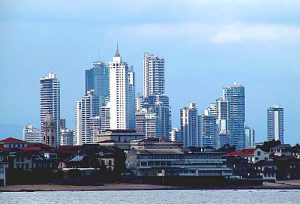Panama – A Tax Friendly Environment for Foreign Investors
By Luis E. Ocando Bustamante, International Tax Partner of Ernst & Young, Panama, Central America, and Dominican Republic.
The economic boom of Panama [1] has been accompanied by changes in its tax system, making Panama more attractive for foreign investors, especially for multinational companies that focus on regional or global context.
Over the last years, Panama has introduced changes in its domestic taxes as well as in the international taxation field. These changes have been allowed Panama to consolidate its position as a main financial and international services center in the region.
The economy of the country is based mainly on the services sector. Panama has become a centre for international services not only for its geographical position but also for economic characteristics, like the use of the US dollar as its currency, and certain tax benefits.
In order to incentive the use of the country as platform of services by multinational corporations, the legislation count with special regimes. For instance, the Law 41 of 2007 created a special regime for the establishment of multinational companies that operate in Panama providing those services included in the Law 41 [2] to its head office or related companies. The regime also applies for a head office of a multinational company. Benefits include exemptions on corporate tax income, VAT, special rules for labor, custom and migratory matters, among others.
“Panamanian law include tax incentives for a wide range of activities, such as tourism, call center, free trade zone, telecommunication, and agriculture.”
The Law N°41 of 2004 is another attractive regime which provides tax benefits for companies operating in “Panama Pacific Special Economic Area” (former Howard Air Base). The regime applies as long as the companies are dedicated to specific services activities, such as maritime services, offshore services, call centers, information technologies, among others mentioned in the Law. The benefits include exemptions for income tax, dividend tax, import duties, VAT, capital gain tax, among others.
The special regimes mentioned above are only examples of the number of laws that provide incentives in the country. Panamanian law include tax incentives for a wide range of activities, such as tourism, call center, free trade zone (known as Colon zone), telecommunication, and agriculture.
As for the general income tax regime, after a 2010 tax reform, changes introduced in the domestic legislation made the country more competitive, reducing the corporate income tax rate from 30% to 25%, which is below the regional average rate. As many countries in the region, Panama does not count with integration rules applicable for dividends, however as a general rule, dividend are subject to a withholding reduced rate of 10%, which may be reduced up to 0% under some tax treaties. The territorial system, that has characterized Panama since its first form of income tax, has not been subject of severe modifications. Therefore, Panama continues to be one of the few countries in the world where taxes are imposed only on income generated within the country.
On the other hand, Panama has been moved toward the international taxation landscape, introducing new concepts and increasing its tax treaty network.
At the moment, seven double tax treaties are already in effect. Those are treaties with Mexico, Spain, Barbados, the Netherlands, Luxembourg, Singapore, and Qatar. Tax Treaties with France, South Korea and Portugal will be in effect on January 1st, 2013. Furthermore, Panama has signed tax treaties with Italy and Ireland which are not yet in force. Negotiations have been finished with Belgium, Czech Republic, Bahrain, Israel, Belgium, and United Arab Emirates, but the treaties have not yet been signed.
In this context, Panama is the only country in Latin American with the most extensive treaty network, compared with other economies of the same size. Companies may take advantage of it to avoid double taxation or obtain reduced treaty rates.
After a process led by the Government, in July of 2011 Panama was removed from the “grey list” of the OECD. The decision to begin a process for the exclusion of Panama from this list was part of a national strategy to promote Panama´s international services. Currently, Panama is working for maintaining this new status through the signing of more tax treaties and the amendment of its domestic law.
In summary, perspective for investment is more than hopeful. According to the Government, the growth prospects are reinforced by a comprehensive five-year plan that focuses logistic, tourism, agriculture, and financial services as the key sectors. Besides, off-shoring services, maritime services, private health services and Regional Headquarter of Multinational are considered sectors with a future potential.
About the Author
Luis Eduardo Ocando is the Tax Leader in the Panama Office and International Tax Partner for Central America and Dominican Republic (EYCA). Transfer Pricing Leader for EYCA.
Luis is a lawyer and has 26 years of experience in the Tax System in Venezuela and over 13 years of experience in international taxation. Luis has been recognized by the International Tax Review as one of the most renowned tax advisors of Venezuela for 7 consecutive years (from 2002 to 2008). In 2011, EY Panama has been recognized by International Tax Review as leader in the market (2011 Americas Tax Awards).
Before joining Ernst & Young Central America (joined on January 2007), Luis was Partner Director of International Tax Services for Ernst & Young Venezuela (from 2002 to 2006). Luis was Tax Partner for PwC from 1996 to 2002.
Member of the Panamanian Negotiation team appointed by the Government of Panama (in September 2009) to negotiate Income Tax Treaties between Panama and OECD Countries.
Ernst & Young is a global leader in audit, tax, transactions and advisory with 152,000 employees worldwide.
[1] According to International Monetary Fund estimations, Panama had 7.505% growth in 2010, 7.404% in 2011, with a projection of 7.238% growth for 2012, 6.563% for 2013, 5.832% for 2014, and 5.3764% for 2015.
[2] For example, direction or operations management; logistics and/or storage of components; technical assistance to its business group; financial Management and treasury services; accounting of business group; consulting, marketing and advertising, among others.
You may have an interest in also reading…
Sustainable Development A Legacy of Innovation: CZFS’s 50-Year Milestone
Under the dynamic leadership of Miguel Lama, a visionary entrepreneur, Santiago is poised to become an international investment destination. The
Wall Street Checkmate: The Intriguing Story of Chess Expertise and Business
High-level finance is a combat zone, and every choice can make or break a career. Move carefully… Can the strategies
Evan Harvey, Nasdaq: Emerging Markets Leverage ESG Strategy
Over the last decade, emerging market exchanges (EMEs) have outperformed the rest of the world in a few key ways






















































































